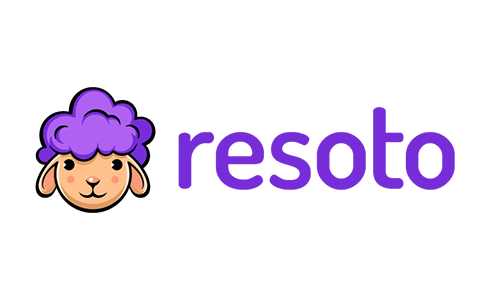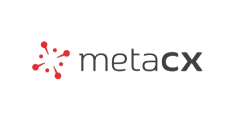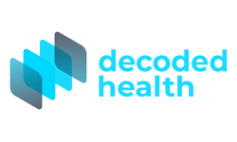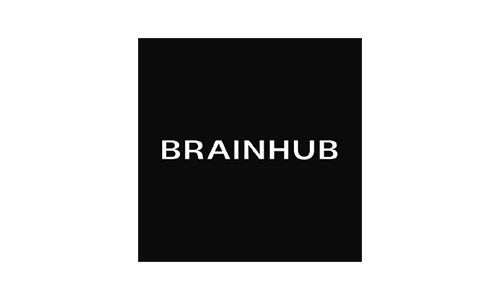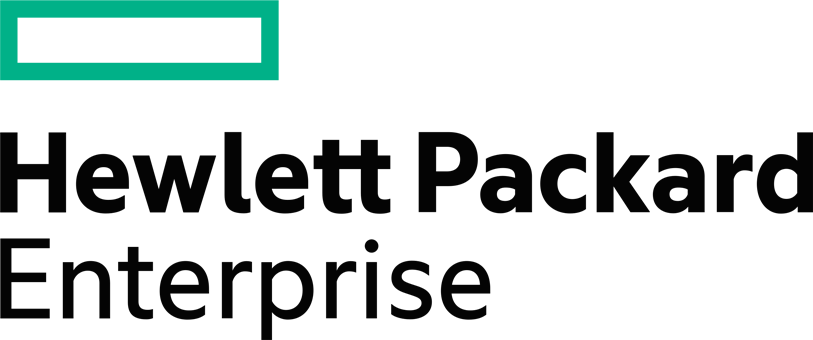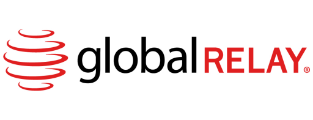

Case Studies
Don’t see your company listed yet? We would love to feature ALL of our customers. Get in touch with us to get your case study input session scheduled today!
Government & Cyber
Finite State, a provider of software threat, vulnerability, and risk management solutions for embedded systems, faced complex and costly database challenges across multiple use cases. Their existing architecture, utilizing various technologies, led to data duplication, slow queries, and high maintenance costs. Seeking a unified solution, Finite State evaluated multiple options, eventually selecting ArangoDB. ArangoDB's versatility, combining graph, document, and key-value storage with a schemaless JSON-based write paradigm, proved ideal for their diverse requirements. With ArangoDB, they achieved streamlined architecture, reduced costs, secure scaling, and improved query performance. The platform's flexibility also opened new possibilities for data presentation and vulnerability detection, making ArangoDB the optimal choice for Finite State's needs.

InfoCamere, the IT company of the Italian Chambers of Commerce, embarked on an investigation into graph databases to explore relationships among Italian companies. They sought a solution to efficiently manage equity participations data. Initially, they considered both property graph and RDF models but found property graph better suited their needs. ArangoDB emerged as the ideal choice for its versatility, query language capabilities, and ability to handle graph data efficiently. InfoCamere conducted a thorough comparison with other graph databases like Neo4j and OrientDB, as well as a relational database like PostgreSQL. ArangoDB consistently outperformed others, especially for complex graph exploration queries. It demonstrated good import and query performance, making it a valuable addition to InfoCamere's applications.
Kaseware, a provider of investigative case management systems, faced the challenge of integrating multiple data models efficiently while maintaining a simple software stack. As Kaseware needed document, key-value, and graph data models, they turned to ArangoDB for a unified solution. ArangoDB's ease of implementation, stability, and flexibility impressed Kaseware, allowing them to quickly develop their platform. With minimal maintenance and a single database for different data models, Kaseware streamlined its stack and adapted to customer demands. The system's stability is crucial for emergency services, and ArangoDB has proven reliable. Future plans include scaling to a distributed cluster with Kubernetes support.

Manufacturing & Supply Chain
Actify, a provider of data management and discovery solutions for manufacturing, faced the challenge of adding sophisticated features to their Centro product without increasing architectural complexity. They needed to handle diverse data types, including CAD files and product structures, while maintaining simplicity and ease of deployment for their customers. Actify evaluated various databases and chose ArangoDB for its multi-model approach, combining graph and document data models in a single database. ArangoDB's built-in REST interface, expressive data modeling, and powerful query language met their requirements. They used ArangoDB to model product structures and assemblies as directed acyclic graphs, resulting in improved product data management and analytics capabilities.
IC Manage, a provider of design management solutions for silicon designers, faced challenges with their existing product, the Global Design Platform (GDP), which used a relational database. Customers found limitations with its structure and performance, leading IC Manage to seek a more flexible and efficient solution for their next-generation product, nGDP. IC Manage opted for ArangoDB, a mixed graph-document database, for its performance, flexibility, and stable support. ArangoDB's document and graph capabilities simplified their code, resulting in significant performance improvements. nGDP tests ran up to 2000 times faster than GDP, and the transition allowed them to add new features quickly and react to customer needs more effectively.
Plural Technology, a leader in Product Lifecycle Management (PLM), needed to address the growing complexity of product data and relationships for more than 200 prestigious clients. Traditional relational databases couldn't provide the insights required. They sought a schema-less database with graph capabilities, AI/ML, and scalability. A Fortune 500 engineering company's request to expedite large order closings led them to choose ArangoDB for its multi-model capabilities and flexibility. With ArangoDB, Plural Technology transformed their database architecture, providing robust graph functionality, scalability, and near-instant query responses. The results included accelerated product queries, full-text fuzzy search, powerful query language, and effortless scalability, greatly benefiting their clients and operations.

Healthcare & Science
Liaison Technologies, a global data management and integration company, faced the challenge of creating a versatile Data Platform as a Service (dPaaS) solution to address various use cases. They needed a system that could handle document storage, graph storage, search, and time series efficiently within a single platform. Liaison Technologies chose ArangoDB for its combination of document and graph storage, transaction support, and excellent performance for medium-sized graphs and document stores. ArangoDB's flexibility and ease of use benefited their iterative development approach, allowing rapid prototyping and testing. The active community and robust documentation further facilitated the adoption of ArangoDB within their team.
Noho Software, aiming to enhance the quality of life for lymphedema patients, developed a solution comprising sensor-laden bandages, a mobile app, and an online platform. ArangoDB addressed two crucial aspects of their project: patient record management and monitoring physical data from connected bandages. ArangoDB's stability, excellent documentation, and community support facilitated a smooth integration. As they handle sensitive patient data, Noho Software is working toward certifications to ensure a secure environment for both patients and practitioners, with ArangoDB as a reliable foundation.

At the Institute for Research in Immunology and Cancer (IRIC) in Canada, ArangoDB is utilized to manage complex genomic data. This includes the entire human reference genome, various molecules, and approximately 50,000 short sequences from patients. While the dataset is manageable on a single machine, it contains over 1 million edges representing genomic interactions for multiple patients. ArangoDB was chosen due to its C++ foundation, Apache V2 licensing, multi-paradigm support, easy transition from SQL, well-documented API, and flexibility. It replaced a convoluted data management system, enabling faster, more maintainable research with quicker experiments and reduced concerns about bugs. Updates for 95,000 documents were near-instantaneous, highlighting ArangoDB's efficiency.
Key2Publish, a company focused on improving product information management, faced the challenge of developing a webshop and Product Information Management (PIM) system for ITK Diagnostics. ITK needed a system to manage its extensive range of over 200,000 products, with plans to expand to 1,000,000 products. Key requirements included fast querying, flexible columns, scalability, JSON/REST API, open-source nature, and cross-platform compatibility. After evaluating various database systems, including PostgreSQL and MongoDB, they chose ArangoDB for its speed, flexibility, support for graph and document data models, and the ability to handle large datasets efficiently. ArangoDB provided fast query response times and extensive documentation, making it an ideal fit for their project.
The University of Oxford's Institute of Biomedical Engineering, in collaboration with the Oxford University Hospitals NHS Trust, aimed to reduce hospital attendance and healthcare costs while improving the accuracy of cardio-pulmonary tests. They developed a mobile app that enables patients to perform the six-minute walk test (6MWT) at home, using mobile technology to transmit results. ArangoDB was chosen as the database solution for its compatibility with Node.JS, scalability, support for multiple data models, security, and SQL-like querying language. ArangoDB's querying language proved valuable for data exploration in research, and the team appreciated the stability and support provided by the ArangoDB development team.
Kode Solutions, an innovative machine learning agency, sought to develop semantic tweet analytics tools. They created Tweetmood, a tweet analytics engine, and integrated ArangoDB for efficient data handling. Tweetmood utilizes ArangoDB to store and analyze Twitter data, representing tweets, users, and hashtags as a graph. ArangoDB's capabilities allowed for hashtags co-occurrence analysis, extracting valuable insights from the data. The integration proved successful, providing a flexible and efficient solution for tweet analytics, and enabling users to work easily with ArangoDB instances.
Pl@ntNet, a citizen science platform for botanical observations, faced scaling challenges as data volumes doubled yearly. Their initial document-oriented database struggled with complex queries, impacting data analysis for research. After evaluating multiple databases, including CouchDB, HBase, MongoDB, PostgreSQL, and ArangoDB, Pl@ntNet selected ArangoDB for its flexibility, SQL-like queries, and replication capabilities. With 250 million documents across 14 collections, ArangoDB reduced disk usage by 95%, improved query performance, and eliminated unplanned maintenance. This enabled Pl@ntNet to efficiently manage growing data volumes, ensuring the success of their scientific, educational, and ecological mission.

Decoded Health, a startup aiming to streamline healthcare with AI-driven patient interactions, needed to build a complex knowledge graph for doctor-patient interactions. They required scalability, time-based capabilities, explainability, machine learning integration, security, and extensibility. After evaluating multiple databases, including ArangoDB, Decoded Health chose ArangoDB for its speed, graph-based time-travel, scalability, and no-code capabilities. They stored their knowledge graphs in ArangoGraph, implemented modular services, and achieved benefits like improved doctor efficiency, faster queries, higher care quality, and developer efficiency. ArangoDB's flexibility allowed them to serve diverse roles, ensuring consistent, high-quality healthcare delivery.
Retail & Commerce
AboutYou, a leading German eCommerce platform with over 700,000 customers, aimed to enhance the shopping experience by providing personalized recommendations. They faced the challenge of tailoring recommendations for both existing and new users with limited information. To achieve this, AboutYou required a scalable solution with a secure API, high privacy standards, and minimal personal data usage. Traditional BI solutions and relational databases proved insufficient. After evaluating various vendors, AboutYou chose ArangoDB, a multi-model NoSQL database that stores data in JSON format and offers flexible document and graph queries. ArangoDB's Foxx JavaScript framework enabled the creation of proprietary microservices within the database, improving query response times and user experience. This approach led to higher sales, increased user engagement, and 50% development effort savings.
FlightStats, a prominent data services company in commercial aviation, needed to harmonize fragmented aviation data from various sources to enhance the travel experience. They faced challenges in storing reference data with temporal information, schema flexibility, and API access. After evaluating different databases, FlightStats chose ArangoDB for its document tree format, versatility, and performance. ArangoDB's multi-model capabilities, data-centric microservices Foxx framework, and excellent documentation streamlined their operations. They efficiently store reference data for airports, airlines, and equipment, ensuring accuracy and enabling temporal effectiveness. ArangoDB's scalability and adaptability support FlightStats' evolving needs, making it a vital technology for their data products and future implementations.

Technology
Cognitiv+, a company specializing in streamlining the legal review process through machine learning, sought a solution to harmonize unstructured document data, improve data categorization, and enhance customer experiences. They struggled with disconnected ML and web development teams and faced challenges in building a flexible, scalable architecture. Cognitiv+ chose ArangoDB for its intuitive query language, multi-model capabilities, granular data access, and permission-based security. ArangoDB streamlined data access, improved customer experiences, and delivered responsive search functionalities. It also ensured security and scalability, while its exceptional performance benefited both internal users and customers, providing precise query results quickly.
Global Relay, a provider of compliant electronic communications archiving and messaging, needed an intuitive directory search for its collaboration suite. They struggled with contextual relevancy using Elasticsearch due to scalability issues. Global Relay chose ArangoDB for its ability to combine graph and search capabilities within the same use case. With ArangoDB, they simplified development, improved contextual relevancy, and accelerated their go-to-market timeline. ArangoDB's edge traversal and ArangoSearch features allowed them to efficiently search for individuals within documents, ensuring data consistency and reducing complexity. This implementation streamlined the user experience, helping users find the right person quickly and easily.
Brainhub, a JavaScript software company, faced a data complexity challenge, requiring the ability to operate directly on nested documents within a document model. Brainhub considered various database management systems (DBMS) options, including MongoDB, CouchDB, RethinkDB, ArangoDB, Redis, and PostgreSQL. They chose ArangoDB due to its multi-model capabilities, powerful query language (AQL), and support for ACID transactions. While ArangoDB proved efficient for most operations, they opted for Redis in some performance-critical areas. AQL simplified query writing and debugging compared to MongoDB's Aggregation Framework, making ArangoDB a valuable choice for their complex application needs.

Innoplexus, a provider of data and analytics solutions for industries like Pharma and Financial Services, sought a high-performance data store for their KOL (Key Opinion Leader) discovery and management platform, kPlexus™. With a large and continuously growing dataset, Innoplexus faced challenges with multiple data stores including MongoDB, Elasticsearch, Neo4j, and Redis. ArangoDB emerged as the solution, enabling them to consolidate their data into one database, eliminating redundancy, and improving performance. ArangoDB's ability to handle both documents and graphs, along with features like full-text search and AQL-based joins, simplified their application and reduced infrastructure costs. Despite initial cluster mode issues, Innoplexus now relies on ArangoDB for efficient data management.
Some Engineering, the creator of Resoto, a cloud infrastructure asset inventory solution, sought a way to tackle "inventory debt" caused by the growing complexity of cloud infrastructure. They needed a system to track cloud assets, dependencies, and metadata efficiently. Choosing ArangoDB provided several advantages, including full-text search, a powerful query language (AQL), schema flexibility, and a smooth implementation process. ArangoDB's features enabled Resoto to build a digital twin of an organization's cloud assets, transforming inventory management into a strategic asset for improving reliability, security, and cost-effectiveness while offering customers a simplified, user-friendly solution for cloud infrastructure analysis and management.
Actify, a provider of data management and discovery solutions for manufacturing companies, faced the challenge of adding features to their product, Centro, without increasing architectural complexity. They needed a solution that could handle diverse data types, including CAD files and product structures. Actify chose ArangoDB for its ability to support multiple data models in a single database, minimizing complexity and enabling them to store product structures efficiently. ArangoDB's expressive data modeling, powerful query language, performance, and distributed features sealed the deal. Now, Actify uses ArangoDB to model product structures as directed acyclic graphs, enabling them to track changes and offer valuable features to their customers, all while simplifying deployment.

Juniper Networks, a global leader in secure, AI-driven networks, faced the challenge of automating network design conversions for their customers. They needed to seamlessly migrate network designs and create a unified view of network devices, connections, and configurations. Juniper Networks initially attempted to use Neo4j but encountered complexities. They turned to ArangoDB due to its schema-less nature, support for various data models (graph, document, key/value), and strong Go and Python support. ArangoDB simplified data storage, manipulation, and output, reducing complexity, increasing flexibility, and improving data integrity. It streamlined the input and output of JSON data, enhancing code maintainability and enabling powerful decoupling of network information.
Kaseware, a provider of investigative case management systems, faced the challenge of integrating multiple data models efficiently while maintaining a simple software stack. As Kaseware needed document, key-value, and graph data models, they turned to ArangoDB for a unified solution. ArangoDB's ease of implementation, stability, and flexibility impressed Kaseware, allowing them to quickly develop their platform. With minimal maintenance and a single database for different data models, Kaseware streamlined its stack and adapted to customer demands. The system's stability is crucial for emergency services, and ArangoDB has proven reliable. Future plans include scaling to a distributed cluster with Kubernetes support.
Orange, a leading telecommunications operator, aimed to create a digital twin platform, Thing'in, that could provide a universal and versatile solution for various sectors, including smart cities and industries. They needed a graph database capable of handling diverse data, supporting geo-distribution, ACID transactions, and powerful indexing. After encountering scalability issues with OrientDB, Orange turned to ArangoDB. ArangoDB's support for diverse data models, including graph, key/value, and document, along with its full-text and geo-spatial indexing, ACID transaction support, and versatile query language, made it the ideal choice. With ArangoDB as its core, Thing'in now boasts 51 million digital twins and offers a systemic vision of the physical world for a wide range of applications, from smart cities to industrial environments.

Refinitiv, a global provider of financial market data and infrastructure, aimed to create a comprehensive Business Analytics and Intelligence (BA/BI) platform, offering a unified view of all data sources to their employees. They needed a fast, schemaless data storage solution to integrate over twenty diverse data sources efficiently. ArangoDB was chosen for its open-source nature, developer-friendly environment, and robust query language (AQL) that supports ad hoc joins and graph traversals. The Foxx microservice framework also played a significant role in speeding up development and integration. With ArangoDB, Refinitiv achieved faster and more secure access to their data, enhanced query flexibility, and streamlined application development.
MetaCX, a multi-stakeholder platform for value networks, needed a robust solution to connect organizations and enable collaborative initiatives. Initially using Datastore, Bigtable, and MongoDB, they faced challenges and slow development. Seeking a graph database, MetaCX turned to ArangoDB for its developer-friendliness and Kubernetes compatibility. ArangoDB's support and features like SmartGraphs and OneShard proved invaluable. Now, MetaCX has a digital network of interconnected organizations and stakeholders. They've achieved 2x faster feature development and a 66% reduction in infrastructure costs over a year, all while efficiently scaling their platform.
AskBlue, a financial and IT consulting firm, faced the challenge of developing BeOnit, a location-aware recommendation app, within a tight timeframe. AskBlue needed a high-performance database capable of handling geo-location data and complex recommendations quickly. ArangoDB's multi-model, schemaless nature and native AQL query language proved ideal for the task. ArangoDB's simplicity allowed rapid development, and the database supported various data models and joins, making it easy for both developers and non-experts to work with. BeOnit successfully utilized ArangoDB to store and process geo-location data, send notifications, and run algorithms for recommendations. The flexibility and performance of ArangoDB exceeded their expectations.
Education
The University of Alabama at Birmingham (UAB) sought a solution to create a versatile Meta-Research Engine, enabling the mass encoding of scientific research studies from various domains. They needed to organize complex data, provide an intuitive user interface, and facilitate conflict resolution among encoders. UAB chose ArangoDB, a multi-model database, for its flexibility and efficient data modeling capabilities. ArangoDB's native query language, AQL, simplified complex aggregations, while its graph-based data structure facilitated hierarchical relationships. This transformation allowed UAB to streamline data management, user conflict resolution, and web portal development, resulting in a stateless, dynamic, and secure Meta-Research Engine.
Karlsruhe Institute of Technology (KIT) needed a solution to manage heterogeneous metadata generated during scientific experiments, specifically in the field of nanoscopy. They required a database capable of handling descriptive and provenance metadata efficiently. ArangoDB provided a single multi-model database, allowing KIT to homogeneously design various metadata services, with scalability that accommodated their growing database size. The document store in ArangoDB stored descriptive metadata, while the graph store handled workflow execution plans and run-time traces. Implementing the OAI-PMH protocol across ArangoDB's data models simplified metadata harvesting. KIT praised ArangoDB's simplicity and multi-model capabilities while suggesting improvements in visualization and handling complex metadata structures.
Telco
Australia's premier wireless carrier, serving nearly 19 million subscribers, needed to elevate its network monitoring capabilities for enhanced control, flexibility, and security. They sought a solution capable of real-time network visualization, analytics for identifying weak points, and predictive modeling. After encountering challenges with other technologies, the carrier chose ArangoDB for its multi-model architecture that accommodates both document and graph data models. ArangoDB's AQL Query Language simplified complex queries, and its scalability ensured future-proofing. The built-in graph traversal and predictive analytics capabilities allowed the carrier to create a responsive network monitoring system. Results included improved uptime, cost savings, and a competitive edge in the industry.
Orange, a leading telecommunications operator, aimed to create a digital twin platform, Thing'in, that could provide a universal and versatile solution for various sectors, including smart cities and industries. They needed a graph database capable of handling diverse data, supporting geo-distribution, ACID transactions, and powerful indexing. After encountering scalability issues with OrientDB, Orange turned to ArangoDB. ArangoDB's support for diverse data models, including graph, key/value, and document, along with its full-text and geo-spatial indexing, ACID transaction support, and versatile query language, made it the ideal choice. With ArangoDB as its core, Thing'in now boasts 51 million digital twins and offers a systemic vision of the physical world for a wide range of applications, from smart cities to industrial environments.
Financial Services
Refinitiv, a global provider of financial market data and infrastructure, aimed to create a comprehensive Business Analytics and Intelligence (BA/BI) platform, offering a unified view of all data sources to their employees. Refinitiv needed a fast, schemaless data storage solution to integrate over twenty diverse data sources efficiently. ArangoDB was chosen for its open-source nature, developer-friendly environment, and robust query language (AQL) that supports ad hoc joins and graph traversals. The Foxx microservice framework also played a significant role in speeding up development and integration. With ArangoDB, Refinitiv achieved faster and more secure access to their data, enhanced query flexibility, and streamlined application development.





